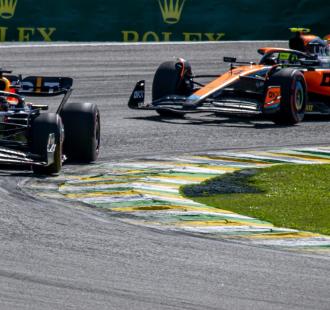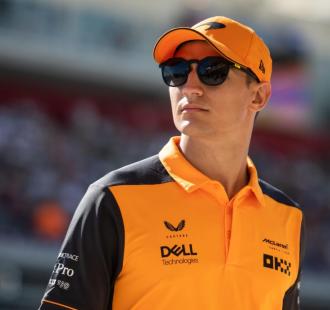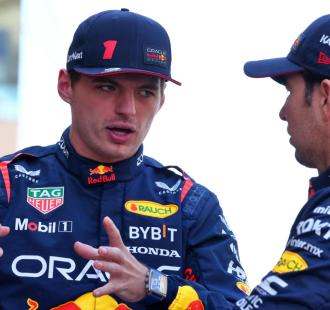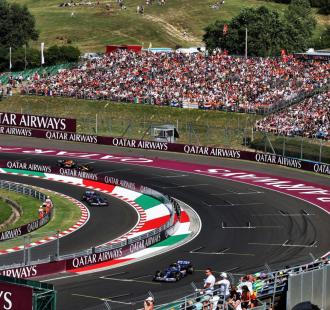
Tech: How Red Bull's rivals face a mountain to climb in 2024
In 2024, Formula 1 cars will converge towards the aerodynamics thathave proven successful in the first two seasons with the groundeffect cars. The stability of the regulations leads the teams tofollow without hesitation the path traced by Red Bull with the RB18first and then with the RB19. The sum of the two factors, i.e.convergence at the level of concepts and regulatory stability,should constitute the ideal condition for a performance convergencebetween all 10 teams. However, it is equally true that precisely ina situation of extreme stability even in the surroundingconditions, represented by the absence of changes also with regardsto the tyres, the performance increases may be less large thanthose seen in 2023, and progressively more reduced as you getcloser to the front rows of the grid. In practice, optimizing a carfrom the bottom or the centre of the grid requires considerableeffort, but the gains in terms of performance are proportionallylarger for the same amount of technical effort made than is thecase for the cars of the top teams. Therefore, in the case ofMercedes, Ferrari and McLaren, once the performances obtained in2023 have been archived and the errors underlying those projectshave been identified and subsequently corrected even if not intheir entirety, the leap in performance, for example of the MCL60,is by no means guaranteed to be equivalent in 2024. The threeteams, in their role as pursuers of Red Bull, have progressivelyidentified (each following an independent analysis process) themost efficient direction to increase the performance of theirrespective cars. It could, however, be said net of the resultsobtained in 2023, that last season was largely used as a test bedto attest to the validity of the design path to follow for the 2024car. The problems of McLaren, Mercedes and Ferrari If Ferrari andMercedes, albeit in different ways, started from architectures thatwere ill-suited to an integration of the concepts of the RB19.Paradoxically for the MCL60, the starting point could be consideredmore in line with the concept of the Red Bull. Nevertheless, thedevelopment work was equally long and not entirely linear for allthree teams, including McLaren. But with the difference in theMCL60's consistent performance in the second part of the season,from Silverstone onwards, was rooted in the fact that it wasoriginally closer to the RB19 than W14 or SF-23. This is a factthat should not be underestimated, as although the leap inperformance of the MCL60 compared to that of the beginning of theseason was evident, in relative terms it allowed the Woking team toonly come close to the yardstick of the season - without ever trulythreatening it - only doing so in the Qatar Sprint with OscarPiastri's win. This does not mean that McLaren, Mercedes andFerrari must resign themselves from now on to an unconditionalsurrender to Red Bull, even in 2024, but that the approach to thetop becomes progressively harder, in terms of effort/benefit ratio.Whoever is at the top, not underestimating the progress of theirrivals and enjoying an advantage in terms of clarity of the basicconcept and direction of development undertaken in the last twoseasons, can develop the 2024 car enough to resolve the residualproblems of the '23 car. In short, it is extremely plausible thatFerrari, McLaren and Mercedes will be much more competitive andabove all show greater consistency of performance in 2024. Thiswill allow them the chance of winning more than just one Grand Prixcombined in 2024, but the dethronement of the Red Bull team is byno means a given and it will depend, precisely, on how strong thepressure the rivals will be able to put on them, throughout theentire season. Article continues below. McLaren MCL60 developmentDevelopment of the MCL60 was largely introduced in Britain and thencontinued in Singapore and Japan. At Suzuka, a package that mostlyresembled the RB19 was used. This could be seen in the bargeboards,the leading edge of the floor, the wider channel between thesidepods and the floor and the side edge of the floor. Floor of theMercedes W14 in Austin In Austin, Mercedes introduced the finalupdate of the season. The profile of the floor was fixeddifferently at the level of the expansion area. The shape of thebargeboards was also new and based on that of the RB19. Latestevolution floor Ferrari SF23 The last revision of the floor wasintroduced at Suzuka and featured a forward extension of the guidesunder the floor. In addition, the floor had a different shape inthe area in front of the rear wheels at the diffuser passage. Allchanges are clearly based on the RB19.


